Media | Articles
Homegrown: “666” hot rod packs triple the Stovebolt, triple the fun
Welcome to Homegrown—a limited series about homebuilt cars and the ingenuity, diligence, and craftsmanship of their visionary creators. Know of a killer Homegrown car that fits the bill? Send us an email at tips@hagerty.com with the subject line HOMEGROWN: in all caps. Enjoy, fellow tinkerers! -Eric Weiner
Every now and again, some automaker will construct the odd twin-engine car for racing (1935 Alfa Romeo Bimotore), limited production (1958 Citroen 2CV 4×4 Sahara), or auto-show spectacle (2005 Jeep Hurricane). But a car powered by THREE engines? That’s something else.
Unbridled curiosity is part of what motivated Jim Noble of Azalia, Michigan, to spend 15 painstaking years constructing the show-grade homebuilt featured here. This retired truck fleet owner calls his creation “666,” not because he’s a devil worshipper but because the moniker most succinctly sums up what propels his rad pickup.
Introduced in 1929 as the “six for the price of a four,” Chevy’s “Stovebolt” six had a long and fruitful life. After engineers perfected its combustion process, it proudly wore a Blue Flame ID label celebrating what shot out the exhaust ports.
Noble gave his engines an 0.030-inch overbore to increase displacement from 235.5 to 239.5 cubic inches per block, achieving an awesome 718.4 cubic inch total. Fitted with dual-carburetor intake manifolds, tubular headers, and mild Isky cams, this 18-cylinder team delivers 550 horsepower by Noble’s estimate. Not to mention enough torque to rotate the Earth on its axis.
Marketplace
Buy and sell classics with confidence
The center six stands tall, while the two outboard engines are each canted 22.5 degrees to make space for intake and exhaust manifolds. Among the premier virtues of any inline-six is the impeccable smoothness and balance inherent to its design. At idle, the Noble trio growls and whirs more like an angry electric motor than any automobile engine. Motorcycle drive chains tie the outboard engines to the center mill’s crankshaft, which spins a Hydramatic 700R4 automatic transmission. One cylinder fires every 40 degrees of center crank rotation. When the six Carter-Weber throttles are blipped, torque gushes forth like water from a fractured dam. Because stealth was not a Noble priority, his six-pack of exhaust pipes wears restrictors but no mufflers.

“My rectangular steel tubing frame provides ample torsional and bending stiffness,” Noble explains. “A step at the front accommodates rack-and-pinion steering and my unequal-length control arm suspension equipped with QA1 adjustable gas-pressure dampers. The rear axle carries a heavy-duty Dana 70HD 4.56:1 motorhome differential equipped with an Eaton E-Locker limited-slip, and there are four trailing links and a Panhard rod.”
A substantial disc brake sits at every corner. The front tires are Cooper radials size 205/65R-15, while the towering rear meats are 455/55R-22.5 Michelins originally intended for semi-truck use. Their cost: $1000 apiece.
666’s handsome grille and cab began life in the same 1954 Chevy pickup truck that contributed one engine to this cause. “I chopped six inches out of the top and four inches from the cab’s bottom to help the engines dominate my custom’s presentation,” says Noble. His homemade cargo box carries a scratch-built 24-gallon fuel cell. The massive aluminum radiator is another prime example of quality craftsmanship; Noble sprayed the Martin Senour base-coat clear-coat paint in a patriotic scheme he conceived at the beginning of this project.

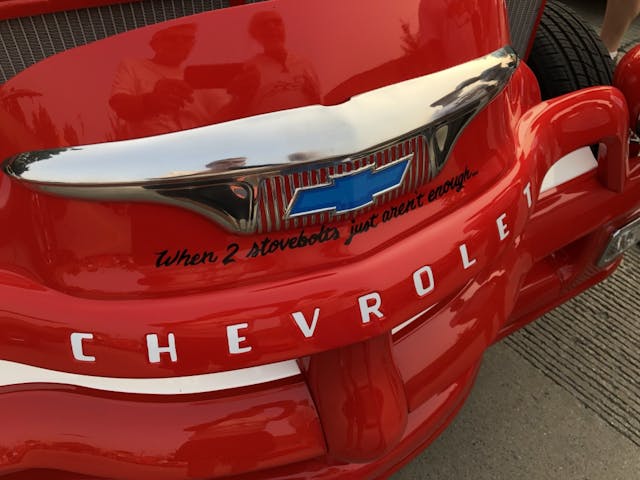
Inside, comfortable bucket seats straddling a massive transmission tunnel are supported by the sheet-steel floor pan. A hinged moon roof brightens the mood and G-Force 5-point racing belts hold the driver and passenger in check. The 2-foot-long shift lever also came from the Chevy pickup donor. The skull knob topping it a period piece from the 1950s hot-rodding era.
After warming his engine cadre, Noble brake torques 666 to light its rear tires. Because the crankshafts in these sixes are supported by only four main bearings, he’s hesitant to top 5000 rpm. Thanks to the 0.69:1 overdrive ratio in the transmission’s top gear, that modest redline is still enough to hustle this rod to a theoretical 190 mph.

The view through 666’s windshield is like peering between Manhattan skyscrapers. Noble sacrificed three windshields to the fabrication gods before successfully trimming to fit without cracking. Given that there are only 40 miles on the odometer since departing the fabrication bay, the 666’s acceleration runs during our thrilling ride-along were limited to quarter-throttle. Following our test sprint, Noble shared his prize at the revived Meguiar’s Detroit Autorama held in March of this year.

Asked what he’s got invested in 666, Noble admits to keeping receipts for purchased parts but never adding them up. Nor did he log the thousands of hours spent here. “Thankfully my wife Cindy is all-in,” Noble emphasizes. “Maybe that’s because we’re both horse aficionados. I pursue horsepower through internal combustion and she competes in equestrian dressage with her Belgian Warmblood Adonis.”
Adonis being a figure of Greek mythology associated with death and rebirth, we pronounce this hot rod born from three Stovebolts legendary indeed.
Check out the Hagerty Media homepage so you don’t miss a single story, or better yet, bookmark it.









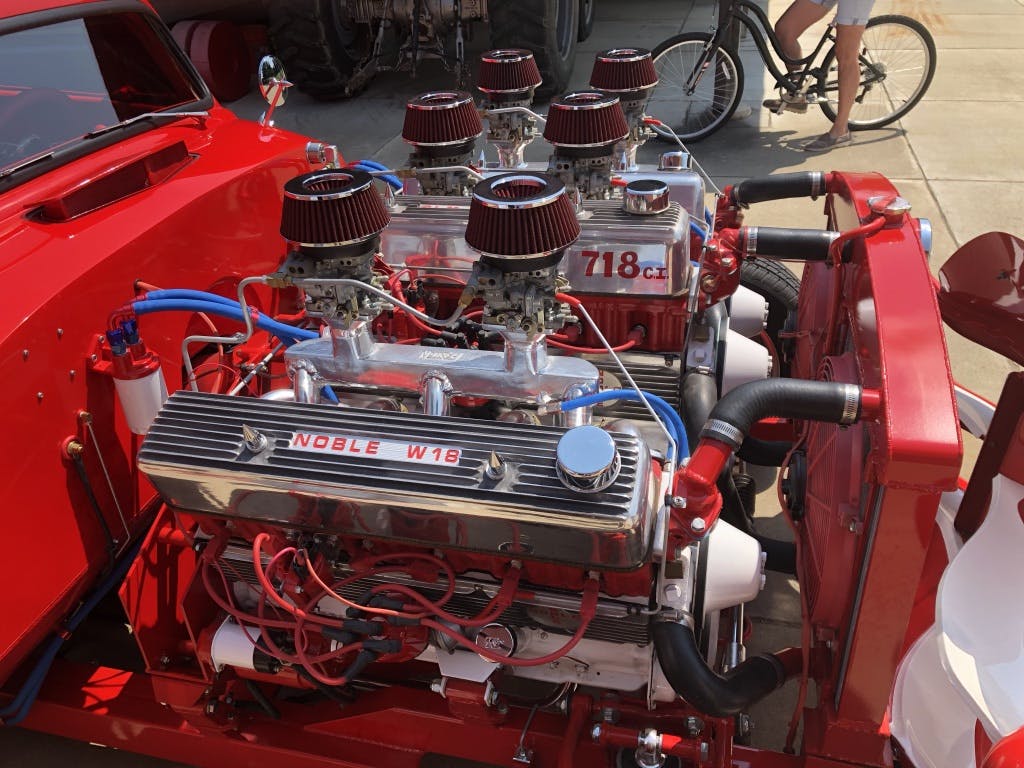
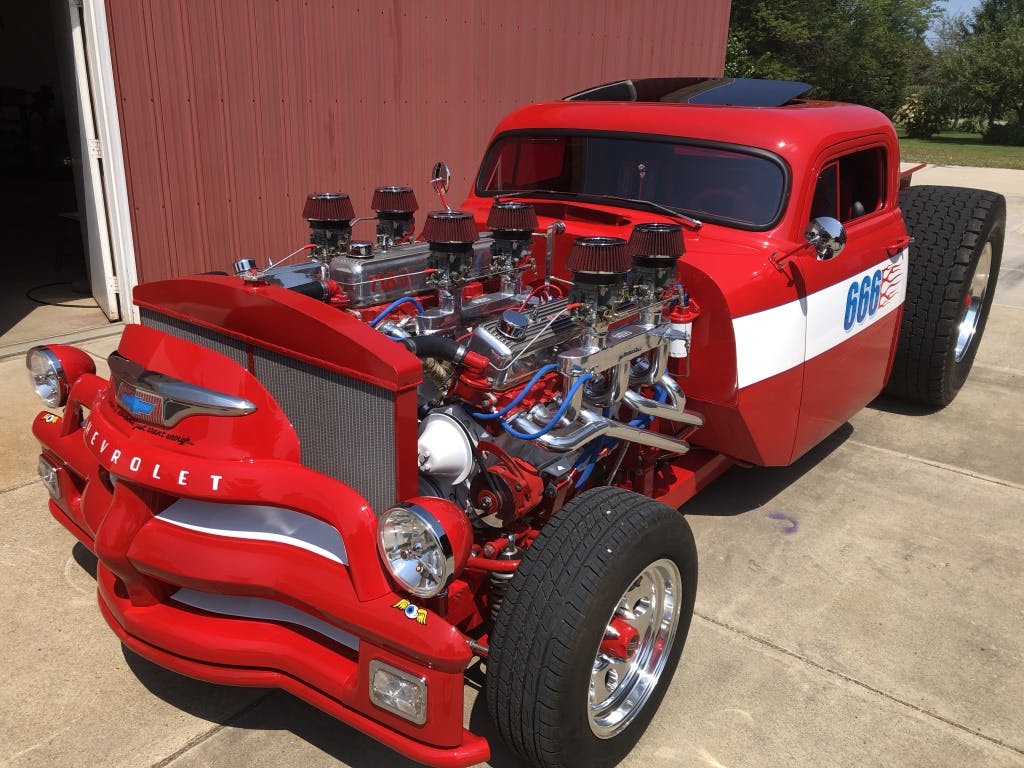
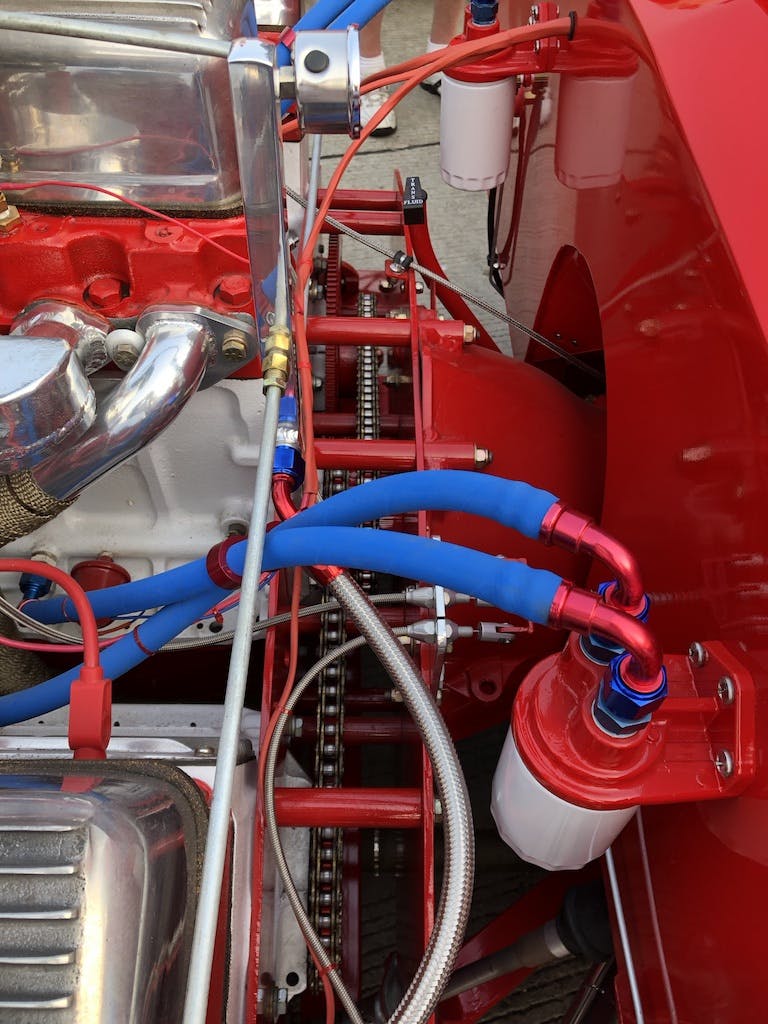

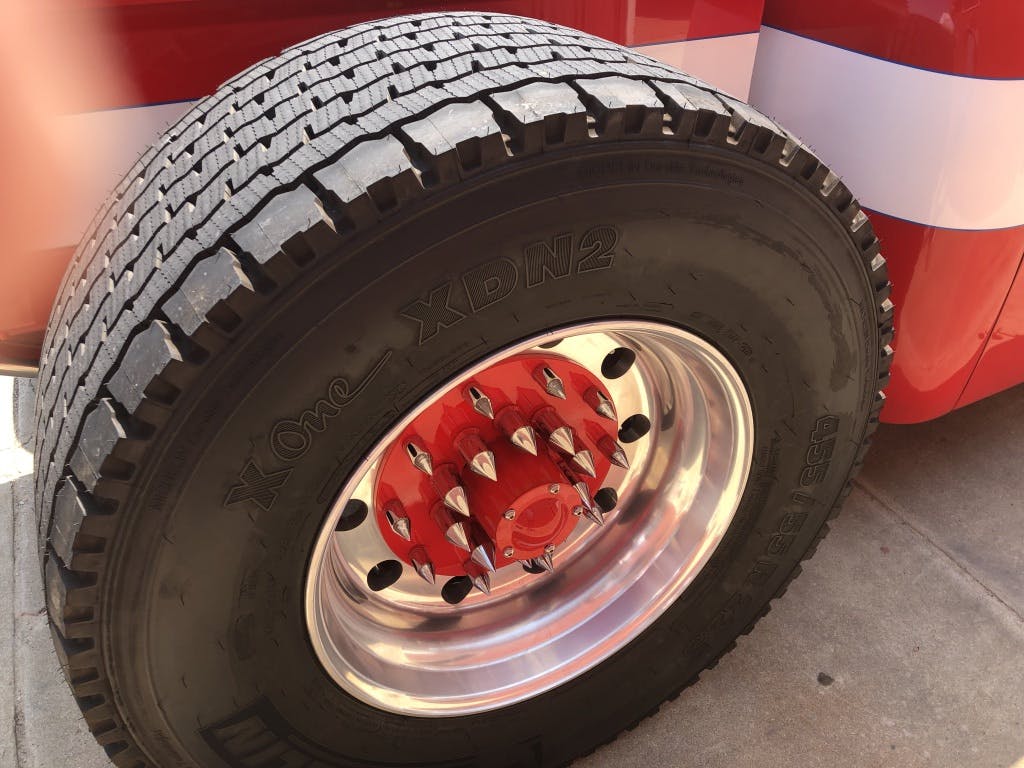


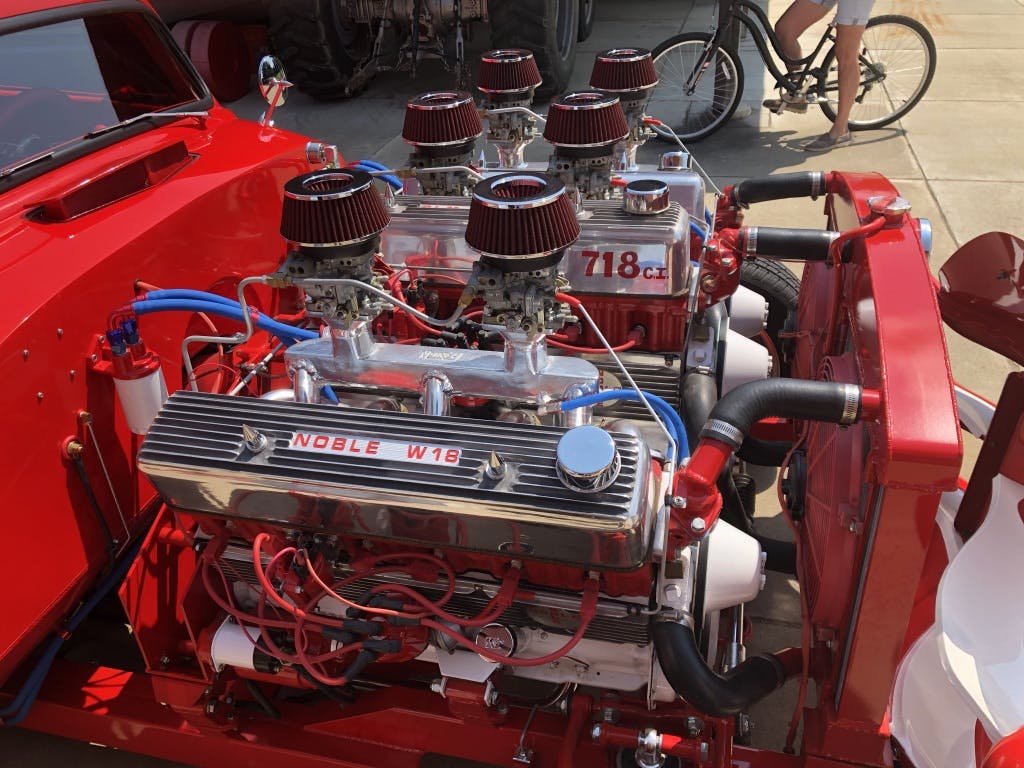








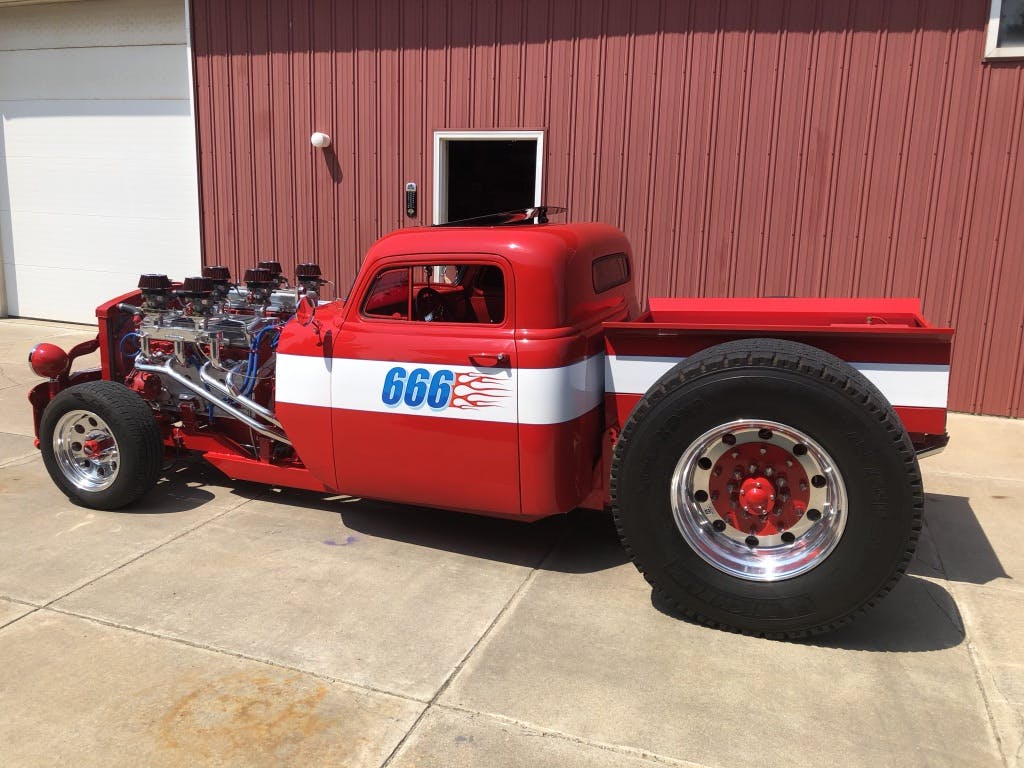
I think Mr. Noble has waaaay to much time on his hands!
I have 1956 california licence plate #bbg 666 in very goood shape .
Proportions are off, could be much better
Wish you had included a recording. A Chevy six without mufflers sounds pretty awful, especially when backing off – not sure what three of them together would sound like…
I was left unsupervised. Best thing about this truck is that line.
Pretty cool, I like the simple agricultural chain drive system rather than some over complicated gear combiner.
If I remember correctly, the Oldsmobile Toronado had a chain drive from the engine to the transmission. Not sure if the chain connected the torque converter to the transmission input shaft or some other way. Anyone know for sure?
I thought the original stovebolt was a 216 cu. in with a dipper rod bearing and 15 psi oil pressure and the 235 came out in the early 50’s with a higher pressure oil system for the crank.
Had a 55 Chevy Belair 2dr – 235 stovebolt when I was 17. I know the car would do 105 mph on level road, but I bet the crankshaft looked like a skipping rope at those revs. Great build though, love the concept and quality. …. I wonder what the outcome could be with, 2JZ Toyotas or RBT Nissan 6’s ? Even two ?
A lot less weight and many times the hp and torque. The 94 Supra I had was 768 hp and 726 lb ft.
Met Jim at a Milan Dragway Car Show this year. This is a work of art as well as a beast of power! Jim is an absolute delight to talk with as he shares about building this project and is willing to respond to any and all questions or comments. I happened to be in the staging lanes waiting to make a pass when Jim left. I waved to him as he left and he was kind enough to “light it up” for a short stent. Whew… this truck is just plain AWESOME!! In any and all aspects… AWESOME!!
Awwwwww man. No cup holders!
Thank you! Its always a pleasure to read Hagerty News, and the persons writing on it, oh boy, the do know their craft!
I thought it was great, until I saw that grill.
It looks like Krusty the Clown’s face was stuck on the front.
Later versions of the 235 were NOT called “Blue Flame”… they were called “Hi Thrift”… no doubt, as a result of some marketing shlep trying to get a bonus.
Way Cool!!! Bad Ass!!!! Kudos